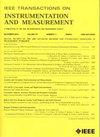Eddy Current Detection of Broken Steel Wires in the Core of the Conveyor Belt Based on CutMix-ReliefF-RF
IF 5.6
2区 工程技术
Q1 ENGINEERING, ELECTRICAL & ELECTRONIC
IEEE Transactions on Instrumentation and Measurement
Pub Date : 2025-06-18
DOI:10.1109/TIM.2025.3580872
引用次数: 0
Abstract
Broken steel wires in the core of the conveyor belt significantly reduce its carrying capacity and overall strength, potentially leading to safety hazards. The eddy current testing (ECT) has significant advantages in terms of cost and portability over other nondestructive testing technologies such as ultrasonic testing (UT) and X-ray. ECT detects changes in the magnetic field, enabling the detection of the broken steel wires. However, the detection of broken wire ropes in conveyor belts has difficulty in obtaining data under actual working conditions, insufficient data diversity, low recognition accuracy, and poor model generalization ability. This article designs a differential probe and introduces a novel approach, the CutMix-ReliefF-RF method, which addresses these challenges based on the differential signal. By applying CutMix, we enhance the diversity of small sample data and construct varied datasets representing different numbers of broken wires, which significantly improves the model’s recognition ability and generalization performance. The fault features of the broken steel wires in the core of the conveyor belt are extracted, and then the ReliefF method is used for dimensionality reduction to obtain an optimal feature subset. The random forest (RF) algorithm is adopted to identify the broken core characteristics from the eddy current (EC) detection signal. The accuracy of the finite element model (FEM) is validated through experimental and simulation signals used to generate training samples. The proposed method can accurately identify broken steel wires in the core of the conveyor belt, achieving a fault diagnosis accuracy of 98.23% under simulation signals and 96.67% under experimental signals, respectively. This provides strong support for the health monitoring of broken steel wires in the core of the conveyor belt.基于cutmix - relief - rf的输送带芯部断钢丝涡流检测
输送带芯部钢丝断裂严重降低输送带的承载能力和整体强度,存在安全隐患。涡流检测(ECT)在成本和便携性方面比其他无损检测技术(如超声波检测(UT)和x射线检测)具有显著优势。ECT检测磁场的变化,从而能够检测到断线。然而,传送带断绳检测在实际工况下难以获取数据,数据多样性不足,识别精度低,模型泛化能力差。本文设计了一种差分探头,并介绍了一种新颖的方法,即cutmix - relief - rf方法,该方法基于差分信号解决了这些挑战。通过应用CutMix,增强了小样本数据的多样性,构建了代表不同断线数量的不同数据集,显著提高了模型的识别能力和泛化性能。首先提取输送带芯部断钢丝的故障特征,然后利用ReliefF方法进行降维,得到最优特征子集。采用随机森林(RF)算法从涡流(EC)检测信号中识别断芯特征。通过实验和仿真信号生成训练样本,验证了有限元模型的准确性。该方法能够准确识别输送带芯部断钢丝,仿真信号和实验信号下的故障诊断准确率分别为98.23%和96.67%。这为输送带芯部断钢丝的健康监测提供了有力的支持。
本文章由计算机程序翻译,如有差异,请以英文原文为准。
求助全文
约1分钟内获得全文
求助全文
来源期刊

IEEE Transactions on Instrumentation and Measurement
工程技术-工程:电子与电气
CiteScore
9.00
自引率
23.20%
发文量
1294
审稿时长
3.9 months
期刊介绍:
Papers are sought that address innovative solutions to the development and use of electrical and electronic instruments and equipment to measure, monitor and/or record physical phenomena for the purpose of advancing measurement science, methods, functionality and applications. The scope of these papers may encompass: (1) theory, methodology, and practice of measurement; (2) design, development and evaluation of instrumentation and measurement systems and components used in generating, acquiring, conditioning and processing signals; (3) analysis, representation, display, and preservation of the information obtained from a set of measurements; and (4) scientific and technical support to establishment and maintenance of technical standards in the field of Instrumentation and Measurement.
 求助内容:
求助内容: 应助结果提醒方式:
应助结果提醒方式:


